

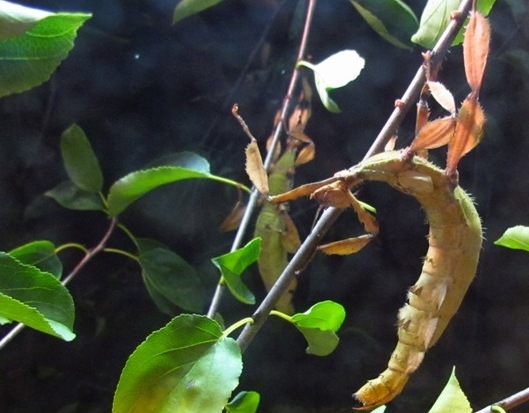
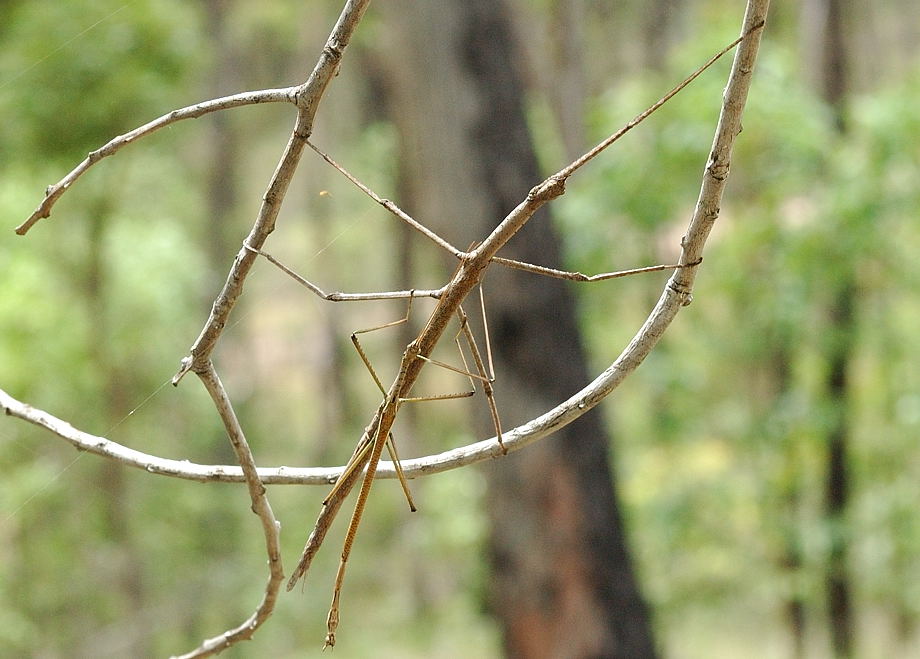
We struggle with deception and illusiveness in our perceptions and desires, but all of nature shares in this struggle because the world is controlled by fear and death. There appears to be mimicry among some creatures which either gives them advantage to gain something or keeps them from becoming vulnerable. So not only does one have to deal with their preconceived imaginings but there is also much more to nature than mere appearance. One might look at a stick bug and conclude the sticks are evolving into bugs under the right conditions. Although I can't cross reference this because I don't remember where I read it, in an ancient Greek superstition fossils seemed to be interpreted as the rocks slowly evolving into life in the secrecy of the night from the energy of moon light. The ancient Greeks saw the fossils as being hard evidence (pun intended) of spontaneous life coming from stones, but they could never see it happen and relied on mystery. Our imaginations can play tricks on us and sometimes our lack of understanding and misperceptions may seem somewhat reasonable because there is mimicry in nature. But there is more to a creature's identity than appearance. And thankfully one does not have to accept any thesis without a true observational witness or one may regret the company they keep and what they promoted. However one does need to establish a boundary for trust if they want to promote real discovery.
Our deep external interests combined with how we value the day of our conception affects how we interpret the world around us. And perceptions will be awakened and transformed when a reality becomes evident in the light of recognizing a determination reflected in nature, but the stumbling stone is that there are two sides to reality. So trust becomes a great desire when one perceives a reality because reality is linked to becoming vulnerable to a hidden intelligence. And so a reality has to make sense before one will want to labor for someone or something true; there has to be genuine, intimate, and mutual interest, because the world is engulfed by illusion and enslaved by affliction! Otherwise reality and an identity will be denied or traded off for a perversion to keep life a mystery in order to find some comfort in death. A person will be into something way bigger than them self that will cost those involved vulnerability and going through some pain if they want something much greater than money. Are the treasures worth the risk of knowing? There are three possibilities: a glory that may cover one in life, a glory that may cover one in death, or no glory at all in order to eat, watch, and lie down in mystery. But all possibilities have to be proved by what one labors for and we have to serve someone's purpose even if it's not a shared dream, because there are determined forces at work in the world to see a dream give birth into reality. A person will also find that people are capable of self-deception or denial in order to be justified in death, but regardless it is important to note that what we trust in influences our interpretation of life. But the person who looks to death to find worth has a tendency to not value or truly seek what is really true; the whole/full truth is really redundant to them and they will reinterpret it to avoid any convictions that error is harmful.
There are errors in life, but do errors lead to giving life
– Life, or is it proof something went wrong and corruption
is slowly flooding life and promoting death because there is a broken
breach? Principia Cybernetica Web (Heylighen, F., 1993)
references The
Red Queen Principle which in evolutionary thought
states, it takes all the running you can do, to keep in
the same place
( Van
Valen L., 1973, "A New Evolutionary Law",
Evolutionary Theory 1, p. 1-30). And there is evidence
that evolution in a physical and scientific sense is going in the
wrong direction, that is the building blocks of life are slowly
breaking down.
All species have an remarkable array of error correction mechanisms that "devote large resources to suppressing random genetic variation" [Dr. Jerry Burgman, 2011]. Many diseases are now known to be a result of faulty error correction mechanisms that allow proteins to mis-fold. Yet it works remarkably well preventing changes evident in stasis and living fossils throughout the entire fossil record and conserved elements in DNA & RNA . All species will have their own separate and distinct error correction mechanisms to prevent mis-folding and the many systems of homeostasis. (Intelligent Design Central on youtube.com, under subheading: About Intelligent Design Central, Why Evolution is Impossible [linked to his Hub Page, para.9] )
Darwin's theory of evolution implied creatures change by being in need within their environment; such as that giraffes grew long necks to reach trees over time by environmental pressure and natural selection, commonly referred to at that time as Lamarckism. Darwin did not know about cell programming of DNA and did not base his theory on errors or mutations, but really to the lack of seeing the Creator. So today we have a revision of Darwin's theory in order to better explain how macro-evolution might seem reasonable based on mutation or the accumulation of errors with natural selection sorting out favorable ones. This revision of Darwin's original theory is referred to as the Neo Darwin Theory (NDT). Because many errors cause extinction or deformity, NDT assumes that if errors accumulate slowly they can lead to beneficial new information and result in a new creature over millions of years; thus macro-evolution. Macro-evolution's only premise for trust is micro-evolution.
Macro Evolution is a change of identity in a creature
due to new information in the cell programming DNA, in other
words The production during the course of evolution of new
forms of life treated as distinct species
(Macroevolution.net,
biology dictionary, retrieved Dec.2011,
"Macroevolution").
Macro-evolution can never be proved or disproved because it happened
to long ago to where no one could observe it or record it;
therefore it is not science because new indentities
from former ancestors are not demonstrated. Macro-evolution
is a theory that is not a modern philosophy!
Micro-evolution is based on the observable evidence that
creatures have a variety of different offspring and have a certain
amount of adaptability to environment and is truly science. But are
differences due to random errors?
Some scientists are reconsidering their theories on how errors are dealt with in the cell because they can to some degree see how corrections are being done. Much like a computer scan works to detect error, there are quick scans and in depth scans only this system seems to be way above our technology, ScienceDaily.com reports:
"How this system works is an important unanswered question in this field," he said. "It has to be able to identify very small mistakes in a 3-dimensional morass of gene strands. It's akin to spotting potholes on every street all over the country and getting them fixed before the next rush hour."
The researchers now are exploring the possibility that the complexes sample the shape or chemical configuration of DNA by interacting with it; an error could alter the local DNA structure, changing its handshake with the repair proteins and perhaps triggering a corrective response. (Houten & Cyert as cited by sciencedaily.com, Mar.2010, Quantum Dots Spotlight DNA-Repair Proteins in Motion, retrieved from www.sciencedaily.com/releases/2010/03/100311123522.htm ).
Dr. Lee Spetner (1998) notes in his book
"Not By Chance," Error rates are as low as
they are only because the cell has a proofreading mechanism which
corrects most of the errors made in transcription
(p92).
The rarity of copying errors is a problem for the NDT. The average rate of copying errors depends on the kind of organism. In bacteria the mutation rate per nucleotide is between .1 and 10 per billion transcriptions [Fersht 1981, Drake 1969, 1991]. But in all other forms of life the rate is smaller. For organisms other than bacteria, the mutation rate is between 0.01 and 1 per billion [Grosse et al. 1984]. The geometric-mean rate is one per billion (10-9 ) in bacteria and one per ten billion (10-10 ) in other organisms. These are the chances of a mutation in a particular nucleotide in a particular replication. (Not By Chance, p92)
To win first prize in the New-York-State Lottery you have to choose correctly a set of six numbers from 1 to 54. The chance of winning is about one in 26 million. …But even if you should win, you'd have a hard time collecting first prize in the New York lottery three times in a row. Nor would you be allowed to win at the roulette table 17 times in a row. Such events are so unlikely that everyone would suspect fraud. Regardless of any precautions that might have been taken, fraud is far more likely than that kind of luck. (Not By Chance, p93)
Selection can favor certain traits to dominate even to the loss of
unexpressed recessive traits if a
minority population is separated from mixing from a whole population
long enough due to environment or breeding, which really is the
result of loosing variety in genes. For example there are
some stick bugs that have wings and there are some that don't
, but they are still stick bugs. There are also other phenomena
that occur in some creatures; the environment can turn genes on and
off but the code they trigger is a highly organized program that has
to be functional for a predisposed purpose. Ants can sprout or
suddenly evolve wings when it's time to spread out, or swarm.
In bee colonies certain events or conditions trigger what the role of
the bee will play by turning off or turning on genes in their
development.
Wikipedia (retrieved on Dec. 2011) tells us
Drones never exhibit typical worker bee behaviours such as nectar
and pollen gathering, nursing, or hive construction. Since
the worker bee's stinger is a modified ovipositor [an egg
laying organ]…
(Drone [bee],
Behavior). To clarify, female bees can sting and potentially
lay eggs and the queen bee can sting and lay eggs; but the drone
which is the only male, of course has no ovipositor and no
stinging system to go along with it, but those cells developed
into a sperm depositing utility which detaches in a female queen bee.
Backyard Beekeepers (retrieved Dec.3,2011)
clues us in, Because the drone has a barbed sex organ,
mating is followed by death of the drone. …The drone does not
have a stinger
(backyardbeekeepers.com, subheading:
Three Castes of Honeybee). Going from an a sperm depositing
system from a stinging system requires a precise and deliberate
library of alternative DNA instructions to protein construction in
the cells, apparently do to a lack of a trigger from a gene in a
male chromosome because bee drones are haploid; that is they only
have one set of chromosomes from an unfertilized egg of the female
queen bee. Not only that, The queen is the only bee with fully
developed ovaries,
and a queen would develop into a working
bee if not fed royal jelly which has a trigger or hormone to
mature the female reproductive system. Backyard Beekeepers (n.d.
) tell us when honeybees loose a queen they make’ a new
queen by selecting a young larva and feeding it a diet of
‘royal jelly
(subheading: Three Castes of Honeybee
). Can a creature get these systems by accumulating error one
at a time?
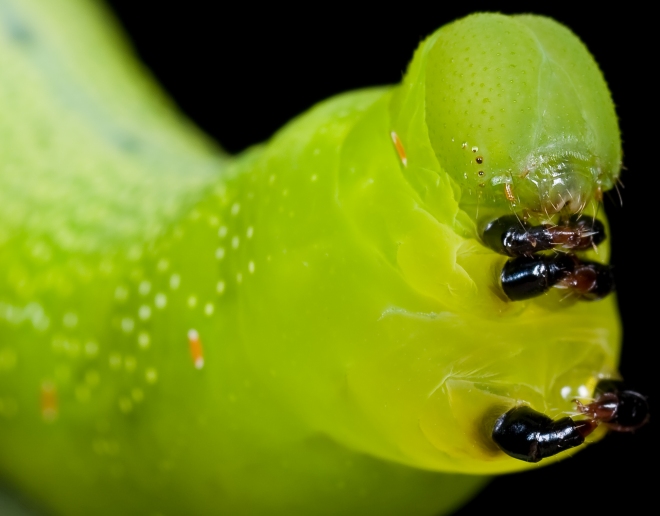
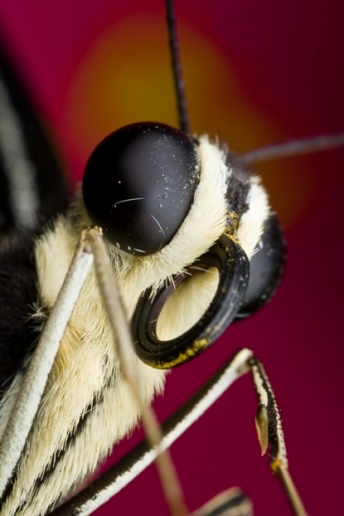
Any organ, even the simplest of organs such as a wing have to have meaningful information in place all at once to function, and a dysfunctional reproductive system would render extinction in one generation. Since we do not observe partial organ systems waiting for the right errors to come along and complete them, or partial new features expressed in populations today for natural selection to select (ex: partial wings, lizard feathers, hoofed dogs…), there is heated debate about macro-evolution or randomness as a science. Spetner (1998) argues not only the impossibility for random accumulation to produce a favorable mutation, but there sometimes seems to be jump in some creature's adaptive response to an environment:
But if a mutation seems to have much more than one bit it can't be a part of cumulative selection. We would have to interpret that mutation as the switching ON of information already in the genome. (Not By Chance, p106).
…if the control is in the development process, even a small change of the "right" kind can lead to a large adaptive change in the phenotype. But the "right" kind of change would be unlikely to occur by chance. If the changes are random, the chance of a "right" change occurring is proportional to the fraction of the "right" changes among all possible ones. The number of "wrong" changes is vastly greater than the number of "right" ones. But—and here is the important point—if the genome were set up for adaptive change to be triggered by a cue from the environment, then chance wouldn't be involved. The right adaptive change would be sure to occur when it was needed. (Not By Chance, p.183).
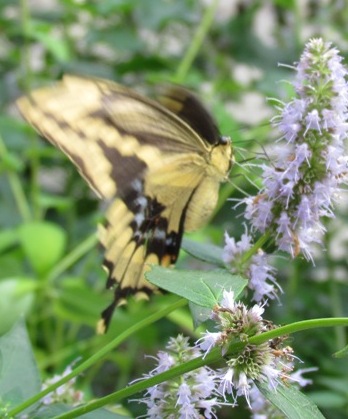 If ever we there were modern proof of
macro-evolution or one creature becoming another
it would be the modern butterflies and moths.
They change from worms that hobble around and all they
know is to eat leaves, but then they fall into a deep sleep
{death for the caterpillar} and randomness changes them
into flying machines which can't eat leaves anymore. But as
chance had it (?) they mutated a straw mouth and
digestive system to eat nectar. Random error (?) chose
color coordinated wings that cause only one creature to admire them
in envy, man. Man could never have mimicked those wings even to
fly with and he can't comprehend how a pee brain can fly with
those un-aerodynamic, cardboard like flappers for wings. How
does a moth or butterfly get them to work so gracefully? Then
some of those unorthodox works of art, which weigh less than a
piece of paper, fly hundreds of miles in migrations to the same
places against winds that should have blown them into unknown
destinies. The Monarch Butterfly goes from Mexico to as far north as
Wisconsin and without education on how to navigate, nonetheless
why to go to certain marsh areas, and all of this by chance
— what an example of how randomness can make you smart and
beautiful ?!! Why bother going to school except to learn
how randomness will make you smarter? But randomness is not
predictable because it does not repeat time after time with anything
to trust in, or know. Please pardon my sarcasm but education is
not for free and is someone's investment to see a dream
come true in reality. And indeed education has become a mystery since
error has become a secret agent and foundational to so called
science, but even this twist has a determined unknown
intelligence behind it!
If ever we there were modern proof of
macro-evolution or one creature becoming another
it would be the modern butterflies and moths.
They change from worms that hobble around and all they
know is to eat leaves, but then they fall into a deep sleep
{death for the caterpillar} and randomness changes them
into flying machines which can't eat leaves anymore. But as
chance had it (?) they mutated a straw mouth and
digestive system to eat nectar. Random error (?) chose
color coordinated wings that cause only one creature to admire them
in envy, man. Man could never have mimicked those wings even to
fly with and he can't comprehend how a pee brain can fly with
those un-aerodynamic, cardboard like flappers for wings. How
does a moth or butterfly get them to work so gracefully? Then
some of those unorthodox works of art, which weigh less than a
piece of paper, fly hundreds of miles in migrations to the same
places against winds that should have blown them into unknown
destinies. The Monarch Butterfly goes from Mexico to as far north as
Wisconsin and without education on how to navigate, nonetheless
why to go to certain marsh areas, and all of this by chance
— what an example of how randomness can make you smart and
beautiful ?!! Why bother going to school except to learn
how randomness will make you smarter? But randomness is not
predictable because it does not repeat time after time with anything
to trust in, or know. Please pardon my sarcasm but education is
not for free and is someone's investment to see a dream
come true in reality. And indeed education has become a mystery since
error has become a secret agent and foundational to so called
science, but even this twist has a determined unknown
intelligence behind it!
Some people are looking for intelligence on other planets because
functional designs are self-evident and can only be the product of
intelligence; random chance only scrambles or confuses organized
systems from all of our known experience (basis for
intuition). So why is intelligence being dismissed on this
planet? Dawkins asked that we drop our intuitive feeling
for probability, or chance. Our intuition, he said, is
not suited to dealing with something as improbable as the origin of
life
(Dawkins as cited by Spetner, 1998, Not By
Chance, p164).
Is it possible that intelligence is being rejected on this planet to trust in experts that will flatter one in death as long as they can be your master on mystery? This was the formula of the dark ages; no one saw error as costly and death as an enemy! One major problem with promoting mystery is that it breeds mistrust and no one really wants to pay for it with their life, even if they think it is flattering. Those who rely on mystery for trust have no borders to honor and either make gods from gold or have a tendency to despise their own kind and turn their affections to beasts or creatures of another identity. Finding trust is necessary for human beings to even want to find life, nonetheless to perceive reality or desire to discover the hidden intelligence! But sincere sacrifices are required to find something real behind outward predisposition; mystery is meant to be discovered only by those searching and willing to labor for treasures greater than {comfort in death} money.
In case it might seem I am implying that solving the macro-evolution
verses intelligent design debate is going to solve our problems,
I am not. All of nature has been corrupted and is prone to error,
and many past empires had unknown gods they declared as absolute
because they recognized design in creation, and societies
problems weren't solved and they disappeared in mystery. But I am
suggesting putting aside prejudices, and rejecting anything you
can't test with results. If one values at least their hard labor
it is wise to have no obligation to anything unknown or one will be
swept away from reality even further yet and may become their own
terror, and a dream will become a nightmare that may give birth
into reality. It is better to be stretched while hunting for
something real than to labor for a counterfeit life. Spetner
(1998) give us the bottom line, Like it or
not, we don't have a theory that can account for the natural
origin of life
(Not By Chance, p210).
With this freedom from any compulsion we can only strongly emphasize
that we simply interpret what we perceive by where we
get worth, and we need to establish a boundary for trust before
one can define what is real and true. Theory is only a
starting point to find science, but when theory becomes superior
to knowledge and understanding, or when theory becomes an
absolute one promotes a denigration of intelligence or truth, in
favor of error or mystery. The only reason discovery becomes so
rewarding is because through much diligent effort meaning was found
behind something illusive, possibly even seductive and
misleading, keeping one from a possible tragic error; Or a hidden
treasure was found that was so profound it was against those who sold
it for their own legacy.
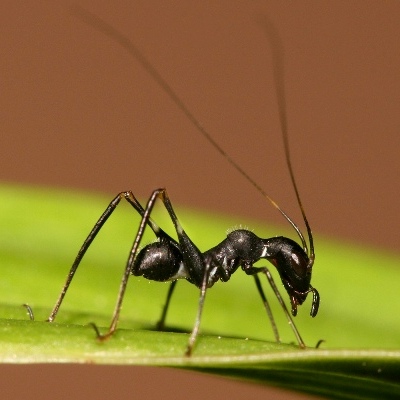
Why do we humans put such emphasis in the mere appearance of things? We have a great need to know our identity like no other creature but I think a natural boundary has been dishonored and trust has been lost internally. If one were merely going by the appearance one can make many errors. Some people think the apes are our relatives because they have some similar features. But just as the katydid instar and the ant are very different I think you will find people are very different from apes, although they have the look.
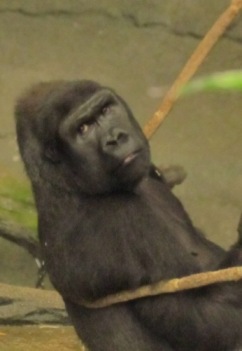 Lucy ( Australopithecus afarensis ) was discovered in
1974 and was very chimp like from the few bones Donald Johanson and
Tom Gray found, but Lucy was popularized as the missing link in
1980's. The bones they found were not even found together and
mostly fragments
Lucy ( Australopithecus afarensis ) was discovered in
1974 and was very chimp like from the few bones Donald Johanson and
Tom Gray found, but Lucy was popularized as the missing link in
1980's. The bones they found were not even found together and
mostly fragments Johanson brought the skeleton back to Cleveland
where it was reconstructed by Owen Lovejoy
(Wikipedia,
nd, retrieved on Dec.13, 2011, from
en.wikipedia.org/wiki/Lucy_(Australopithecus)#Discovery
). Apes and monkeys are not designed in their bone or muscle
structure to walk upright, they are made for climbing. But
Lovejoy reconstructed the hip features to be humanlike when nothing
about the monkey really suggested anything humanlike, but they
had to come up with something to justify grant money. Maybe free
gifts have something to do with how appearances change but someone is
going to pay! Is the interest true?
To see the
flaws in Lucy's reconstruction see Dr. Mention's video "
Lucy She's No Lady, Part 4" if you
wish to see Lucy's hip reconstruction. Why isn't some other
chimp like monkeys evolved more, at least at the hip for walking
upright? Many have said seeing is believing, and we
do have eyes because appearance does help us initially to identify a
general perception quickly which can be very important, but one
needs to validate an experience with other confirmable input from
other senses because there is illusiveness in nature, including
our own. With all the emphasis on appearance, why government
funded scientists choose chimps and baboons as our close relatives
when gorillas look a lot more like humans at least in their facial
expressions and build, eluded me in my effort even in trying
to understand them. What is the reasoning as to why one believes a
chimp should be our cousin? What is it that connects us in
relatedness?
Most medical experiments are done on mice not monkeys,
because among other reasons in some ways our bodies do react more
like mice, which seem to be why some science magazines are now
proclaiming a mouse as a man's real ancestor. For some reason
some experts always seem to like belittling their subjects
(although maybe subconsciously) to feel important, and
there may seem to be justification for it in some cases due
to offences committed in ignorance, but could prejudices against
other people or a way to obtain worth be affecting an interpretation
of reality. Monkey parts are not used in human beings as one would
think if they were 97% similar in DNA (which also is a
misinterpretation). But there have been cases where horse,
cow, and especially pig extracts, tissues or parts, have
been used in humans from tendons to heart valves.
Adam Pick (n.d.) says, By some amazing
twist of evolution, human heart valves and pig valves are very
similar in structure and function
(retrieved Dec.2011 from
www.heart-valve-surgery.com/heart-surgery-blog/2007/09/
19/pig-valve-replacement/). And in a tendon
application in a particular sports injury
Dador & Eisner (n.d.) of ABC report:
What surgeons do is sew the pig tissue into the torn tendon. Over time, the body creates new tissue around the area to fix the tendon. The tissue patch, which is made mostly of collagen, somehow stimulates the body to grow the new tendon tissue, also mostly collagen. The body also absorbs the remaining pig tissue. (Pig Intestinal Tissue Helps Human Injury, abcnews.go.com )
Some doctorates like to do behavior related tests on monkeys and then compare them with human behavior. Is there correlation of intelligence between chimps and man? First, apart from theoretical experts, we can take into consideration that chimps, baboons, or even gorillas are not compatible pets with people if we wish to test correlating intelligence, or in the least some common interests. Dogs have been the favorite pets for a long time, with horses being a big second favorite among those in the outback or country settings. Some sheepdogs are capable of being able to communicate with herders with a most astounding cooperation and awareness to rounding sheep, not to mention they identify and tend to protect those who nurtured them even against other dogs. And of course some cowboys have equally and maybe even more adept horses to help them round cows. Horses can be very sensitive to human interaction and temperament with an understanding returned, and in my observation more than any monkey has demonstrated. Where is the useful or understanding interaction of intelligent monkeys? It is true one can train them to do tricks, but I think a good parrot trainer can do equal if not more entertaining tricks with the right kind of parrot. Irene Pepperberg actually taught a parrot named Alex a vocabulary and proved birds could think and contemplate some amount of detailed awareness because Alex could express his experience through words, which chimps haven't done. Regardless, I am talking of meaningful connectedness that are related to human beings and doing something meaningful that binds a friendship. You do not hear societies say monkeys are a man's best friend, because they do not share such a commonality!
I guess that if one cannot judge internal differences through
intimate connections then we must analyze the internal mechanics if
we can even intellectually understand those, but we must not call
possibility science it must be demonstrated,
observed, and understood mechanically because we are prone to
error. To paraphrase cosmologist John Barrow, a brain
simple enough to be understood is too simple to produce a mind able
to understand it
(Myers, D., 2010,
Psychology 9th ed.. New York: Worth Publishers, p81).
Glazko,G., Veeramachaneni,V., Nei,M. & Maka?owski,W. (2005) discovered – Eighty percent of proteins are different between humans and chimpanzees:
In brain development it seems that chimps and chickens would be the closest of cousins:The early genome comparison by DNA hybridization techniques suggested a nucleotide difference of 1- 2%. Recently, direct nucleotide sequencing confirmed this estimate. These findings generated the common belief that the human is extremely close to the chimpanzee at the genetic level. However, if one looks at proteins, which are mainly responsible for phenotypic differences, the picture is quite different, and about 80% of proteins are different between the two species. (Glazko G., et al., 2005, Eighty percent of proteins are different between humans and chimpanzees, abstract)
Pollard's analysis showed that HAR1 is essentially the same in all mammals except humans. There were only two differences between the chicken and chimp genomes in HAR1's sequence of 118 bases [bases are subunits of DNA, the As, Cs, Ts, and Gs that spell out the genetic code]. This similarity means the DNA sequence remained unchanged over hundreds of millions of years of evolutionary history, an indication that it performs a biologically important function. (Stephans, 2006, Newly discovered gene may hold clues to evolution of human brain capacity, para.9, University of California Santa Cruz )
With a battery of enzymatic and chemical probes, we found
the human and chimpanzee HAR1 RNA secondary structures differed not
only from the published models but also dramatically between each
other
(Beniaminov,A., Westhof,E. &
Krol,A., 2008, Distinctive structures between
chimpanzee and humanin a brain noncoding RNA,
subtitle: introduction,
PubMed
Central ).
 The most interesting phenomena is that when people see a less
intelligent monkey and identify with it as a part of their family
they begin to despise their own kind who they could possibly relate
to – that is they have a tendency to want to abolish human
beings for the glory of a less intelligent, less compatible form
of nature – you might even say it is a wish to evolve into a
lower being. This is truly a perversion of what is natural or a clue
that a sacred boundary has been disrespected. There is a great
fascination for the death of man, but what is not natural about
it is that it comes from within man himself. Maybe reality was
rejected because someone used truth to harm another when they were
afflicted instead of using it to deliver them from trouble. Or maybe
one wants no conviction when robbing another in their vulnerable
moment so error is promoted as natural. When one gets their worth
from the wrong places or attempts to take the place of God –
intelligence is against him and he becomes his own enemy celebrating
the death of his own identity. Regardless, one might conclude
that the theory of evolution is a human attempt to mimic or relate to
an ape, but even an ape would be offended because it is a mockery
of their identity and not a sober judgment. This even goes against
the evolutionary theory of survival of the fittest species. Who is it
that really decides what is fit because when boundaries are not
honored no one trusts in natural selection because of a need to find
worth and some kind of glory. And as irony has it there is an
intelligence force behind a confusion of identity. Trust can never be
realized until a boundary is established and honored or error and
mimicry keep life a mystery and one befriends death.
The most interesting phenomena is that when people see a less
intelligent monkey and identify with it as a part of their family
they begin to despise their own kind who they could possibly relate
to – that is they have a tendency to want to abolish human
beings for the glory of a less intelligent, less compatible form
of nature – you might even say it is a wish to evolve into a
lower being. This is truly a perversion of what is natural or a clue
that a sacred boundary has been disrespected. There is a great
fascination for the death of man, but what is not natural about
it is that it comes from within man himself. Maybe reality was
rejected because someone used truth to harm another when they were
afflicted instead of using it to deliver them from trouble. Or maybe
one wants no conviction when robbing another in their vulnerable
moment so error is promoted as natural. When one gets their worth
from the wrong places or attempts to take the place of God –
intelligence is against him and he becomes his own enemy celebrating
the death of his own identity. Regardless, one might conclude
that the theory of evolution is a human attempt to mimic or relate to
an ape, but even an ape would be offended because it is a mockery
of their identity and not a sober judgment. This even goes against
the evolutionary theory of survival of the fittest species. Who is it
that really decides what is fit because when boundaries are not
honored no one trusts in natural selection because of a need to find
worth and some kind of glory. And as irony has it there is an
intelligence force behind a confusion of identity. Trust can never be
realized until a boundary is established and honored or error and
mimicry keep life a mystery and one befriends death.
There is elusiveness in nature and although appearance has some bearing on general perceptions, there is more to a creature than mere appearance. Is not one's true father really behind the intelligence that inspires their dream to give birth in reality, or maybe we could say – the one we adopt to be our provider influences the interpretation of our perceptions? Intelligence is metaphysical evolution based on a trust for shared desires to be met, and that is what transforms one and gives one their identity. And although we are generally designed as the other creatures, we are slowly discovering scientifically that we are not really similar to any particular animal; chimps or baboons are not more similar in biological makeup to humans than any other mammal. We chose the father we want to adopt us based on a shared desire, or do we mimic for a free gift that will cost us reality?
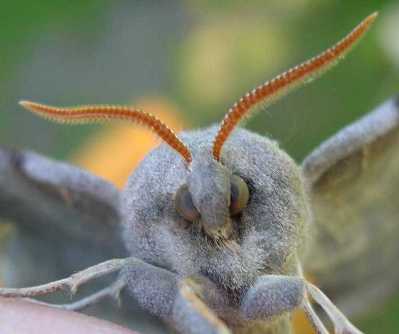
The grizzly bear is the most fearless animal on land in our time, and fears no one except the boundary that covers man. He eats everything and anything he wants and yet he is not a happy creature with all the power he has naturally been endowed with (do not kiss a grizz on the lips)! Man is much less endowed with natural strength and one might wonder how he ever survived in his frail state throughout the ages. He has been given the world with the only thing to inspire him to risk going through trouble is to see a dream from heaven to give birth into reality. For this to happen he feeds from an intelligence in order to be covered in some kind of glory and to find wisdom; interpret what he is seeing in reality. Man's ability to create, destroy, and reason, identifies him as a child of God because he is a seed of intelligence –but his intelligence has been corrupted by an unfaithful desire in order to find worth. Death has put a damper on the grander and adventure in this world, but losing your life for a true friendship and heavenly dream to become real and to contribute to the experience of a new world is the ultimate test of true interest and trust.
Death really starts with a loss of identity and a loss of trust. Although the fear of unknown destinies should force us to question what we trust in, and is supposed to bring us to the point of sober reality, people really do not fear death. People fear affliction and not having their deep desires fulfilled. But going through a certain amount of affliction is necessary to prove that interests are unwavering and trustworthy before a new world and a wedding from heaven can be conceived in reality. Every person is going to get exactly what they labored for in the long run even if it's a different heaven – it's a promise from God and it is a supreme justice that will prevail in the long run. Even the ungodly, those among them who labor for something more than their belly, recognize: everything a person truly sends out comes back to them in time, and it's better to die trying than to live for nothing. The risk is — will one get a return of the right kind of interest?
Time or waiting can stretch one and put us at the brink of our patience but is also good for checking one's sincerity and real desires; due to the mimicry and illusiveness that is inspired because of the temptation for quick treasure, glory, or fraudulent trust, one can error in their anxiety and lack of surety. There is fear, elusiveness, seduction, and illusion, which will bring out a desire to find an authority to trust in for those who value the day they tasted life. It really is about finding whose living, active word, will have power to cover one in reality, give one worth, and give one an identity by showing them their Father and revealing a door that can be opened so heaven will touch earth. But there is mimicry in nature and there is a different kind of Jesus (seed)! One has to define the terms because it is a case of finding true identification. Blind faith is only for those who do not value who they labor for; they want to evade reality and keep the dream a mystery to feed their belly and lie down in self-flattery with the living dead. Seeing the glory of the boundary is an absolute to truly begin to believe: either to trust in the power of illusion or the power of the Living Truth; both bring one into a reality through an intimate desire to obtain real riches, and a shared glory. So what are the boundaries to find reality and a door to heaven to see a dream give birth in reality? Religion and evolution are only philosophical and will only promote mystery; they have the same goal from different ends and only the true children will see it. A person really only fears being separated from the one they trust in: a boundary is set in heaven that defines these worlds that will be separated after true interest is proved. The credit lender is coming first!